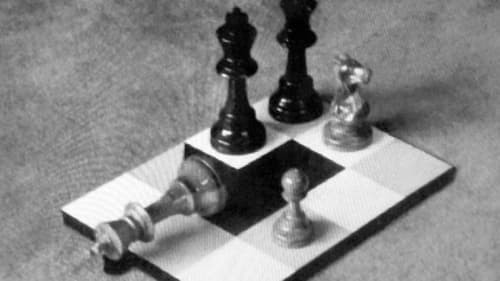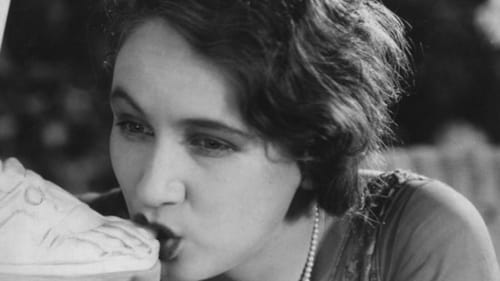Max Ernst
출생 : 1891-04-02, Brühl, Germany
사망 : 1976-04-01

Himself (archive footage)
A surreal film about surrealism.

This documentary celebrates Max Ernst, one of the most influential and visionary artists of the past century. The film covers the highlights of Ernst's fascinating career via a format that mirrors the restless reality of his life. An inveterate traveler and always on the move, Ernst lived and worked in Germany, France and America. His nomadic way of life kept him searching: "A painter is lost if he finds himself."

Le soldat mexicain (dans le film publicitaire "Galeries Barbès")
A pathetic police chief, humiliated by everyone around him, suddenly wants a clean slate in life, and resorts to drastic means to achieve it.

Ottinger’s debut film already contains many of the elements that would appear in her later works: an extraordinary woman, an unusual country, and a chain of magic transformations that give rise to eccentric characterizations by an ensemble cast, here featuring Tabea Blumenschein in multiple roles. Inspired by Virginia Woolf’s Orlando, Ottinger’s allegorical work explores themes of death, destruction, and resurrection. With striking camerawork reminiscent of the antics of avant-garde psychodramas, Laocoon & Sons is filled with an exuberant sense of life, myth, tradition, and magic.

Himself
"This film was presented as part of my 1969 thesis on Max Ernst. It was a personal tribute where I filmed his collages, then intercut live footage I shot with other reference material into a surreal visual collage." - Penny Slinger

Story
Surrealist short film of images viewed to a surrealist poem by Max Ernst.

Max Ernst on amateur astronomer Ernst Wilhelm Leberecht Tempel.

Writer
Max Ernst on amateur astronomer Ernst Wilhelm Leberecht Tempel.

Self
An overview of Luis Buñuel's career. Includes an interview with the filmmaker.

Self, Narrator
The inner world of the great painter Max Ernst is the subject of this film. One of the principal founders of Surrealism, Max Ernst explores the nature of materials and the emotional significance of shapes to combine with his collages and netherworld canvases. The director and Ernst together use the film creatively as a medium to explain the artist's own development.

8 x 8: A Chess-Sonata in 8 Movements is an American experimental film directed by Hans Richter, Marcel Duchamp, and Jean Cocteau. Described by Richter as "part Freud, part Lewis Carroll" and filmed partially on the lawn of Duchamp's summer house in Southbury, Connecticut.

Bandit Leader in the Hut
한 쌍의 남녀가 진흙투성이 길 위에서 사랑을 나누고 있다. 거리가 시끄러워지고 결국 남자는 체포된다. 남자는 수갑을 찬 채 끌려 가면서도 오로지 자신이 갈망하는 여인만을 생각한다.
영화는 마치 다큐멘터리처럼 전갈의 생태를 묘사하며 시작한다. 그리고 산적들, 사제, 군인, 관료가 차례로 등장하고, 영화의 주인공으로 보이는 한 쌍의 젊은 남녀가 사랑을 벌인다. 이들의 사랑이 부르주아들에 의해 끊임없이 방해받는다는 것이 이 영화의 주요한 이야기인 셈인데, 영화의 마지막 부분은 영뚱하게도 사드 후작의 소설 <소돔의 120일>의 후일담으로 넘어간다. 여기에 등장하는 4명의 '패륜아' 중의 한명은 예수의 모습을 하고 있고, 영화의 마지막 이미지는 사막에 버려진 십자가이다. 이러한 이야기 사이사이에 우스꽝스럽고 기괴한 부르주아의 삶의 단편들이 끼어들고, 자막과 대사, 음악은 이 영화의 공격대상이 무엇인지를 숨김없이 드러내고 있다. <황금시대>는 일부 좌파 지식인을 제외한 모든 이들의 격렬한 분노와 항의를 불러일으켰다. 가장 문제가 된 것은 예수를 사드 소설의 주인공으로 묘사한 신성 모독적인 부분이었다. 영화가 상영되는 극장에 몰려온 극우단체 회원들은 영사막을 찢었고, 찢어진 영사막 위에 영화는 며칠간 계속 상영되었다. 결국 들끓는 여론과 카톨릭 교회의 압력에 따라 파리시 당국은 상영 금지 조치를 내리고 프린트를 압수하였다.






